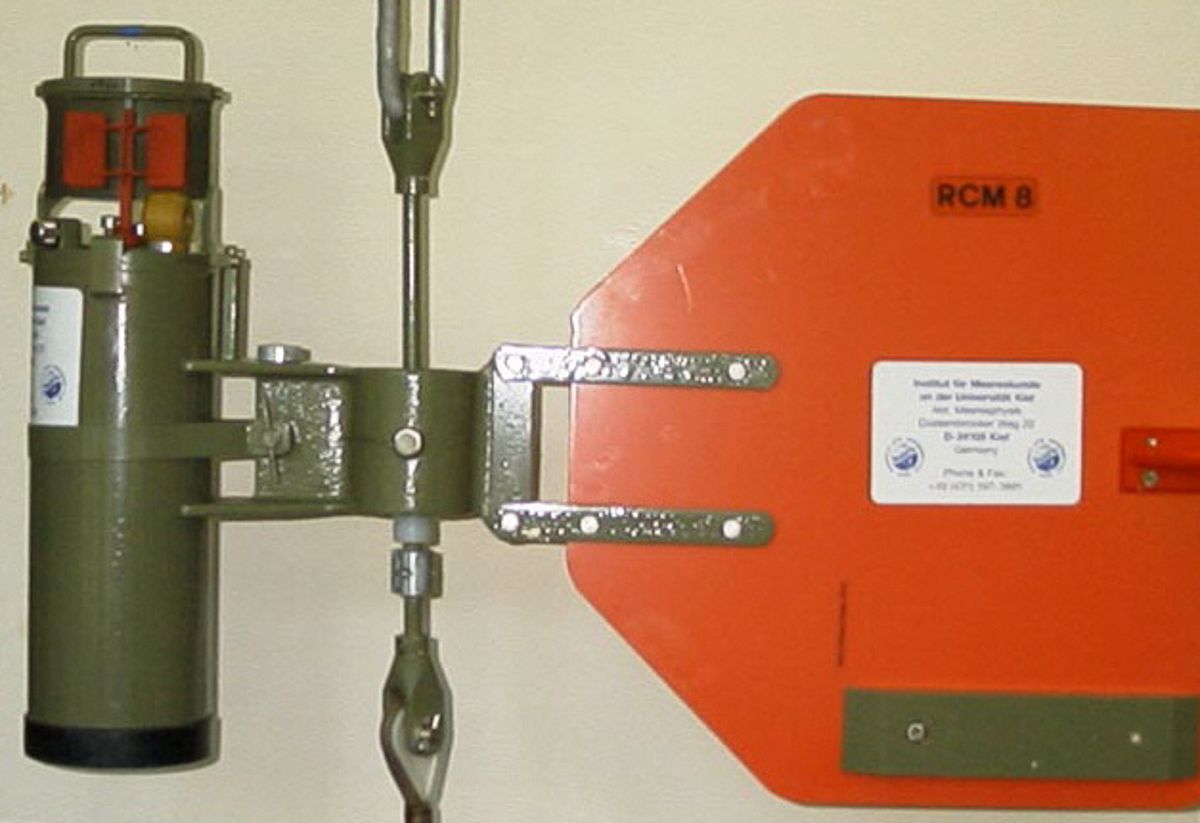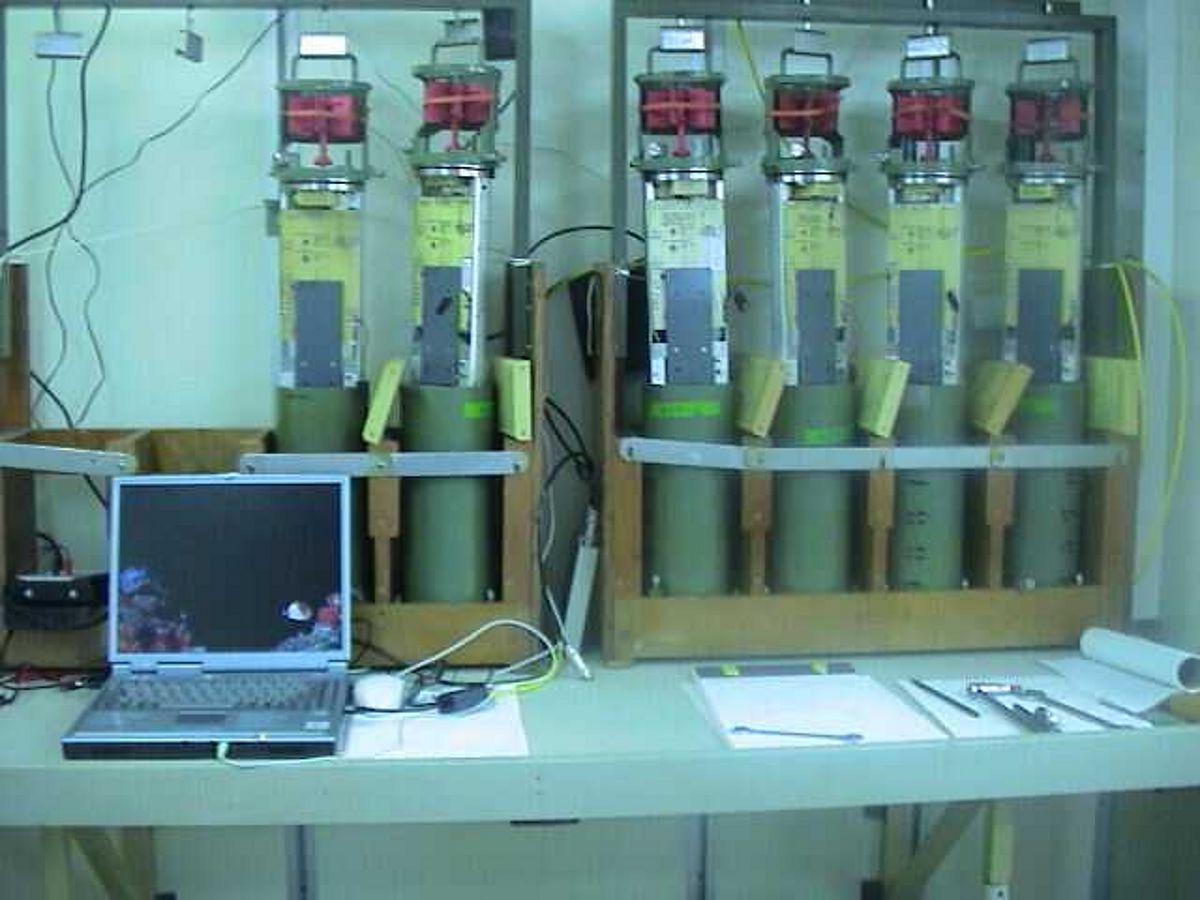Aanderaa Current Meters
An Aanderaa current meter is used to determine direction and strength of a current flow. The current vane aligns the instrument with the current, and the built-in compass measures the direction of the flow. Its strength (or speed) is measured with the impeller at the front end of the instrument. Some instruments are also equipped with additional sensors to determine other important quantities, such as temperature, salinity, or pressure.
The data are stored inside the instrument and read following the recovery of the entire mooring. More recent developments enable the transmission of data through the mooring wire to the surface, and subsequent satellite transmission to the land station. Typical current speeds in the ocean are on the order of 10 cm/s (0.36 km/h), fairly slow in comparison to the atmosphere.
Due to the large heat capacity of sea water, the ocean plays nonetheless a significant role in the distribution of thermal energy on this planet. Therefore, direct measurement of ocean currents with instruments like an Aanderaa helps to determine the transport of water masses and heat globally.
The relatively small ocean velocities do pose a technical problem: Delicate mechanical devices are required to measure low speeds, yet the instruments need to be extremely robust to withstand shipboard handling and extreme hydrostatic pressure at the deployment depth (several thousands of meters, equivalent to several hundreds of atmospheric pressures). Furthermore, these instruments cannot be manufactured from any ferro-magnetic materials (steel) since the internal magnetic compass would no longer work properly.
Additional complications are due to corrosion in the chemically aggressive salt water, plus the necessity for battery-supplied power which must last throughout the entire deployment period (up to several years)




